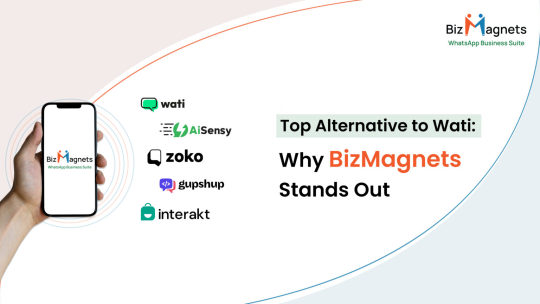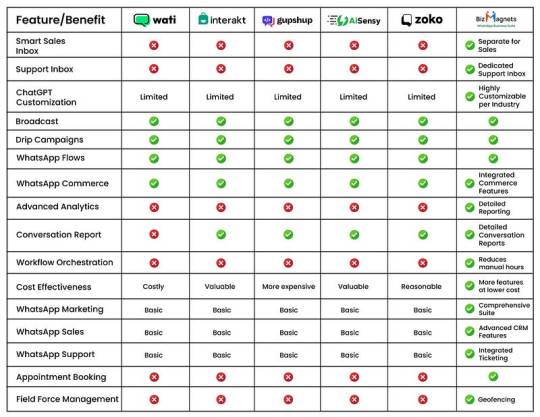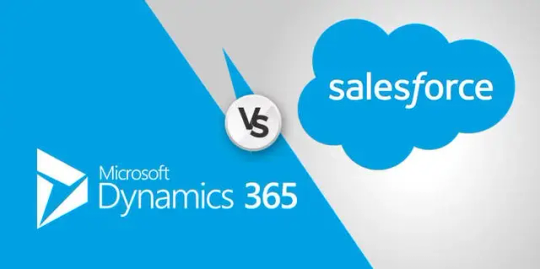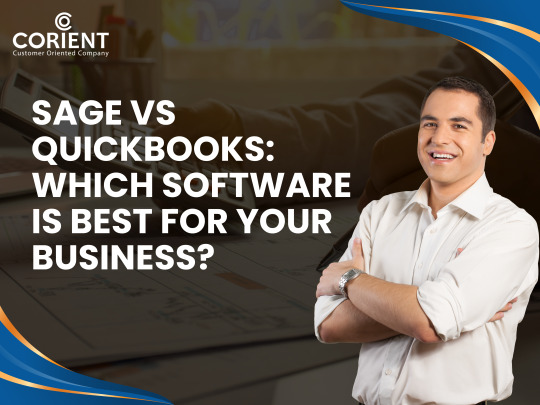#CRM comparison 2024
Explore tagged Tumblr posts
Text
Discover the ultimate comparison between Oracle Sales and Salesforce Sales Cloud in 2024. Uncover how Oracle’s robust ERP integration caters to large enterprises seeking deep functionality, while Salesforce offers a flexible, scalable, and user-friendly CRM for businesses focused on quick implementation. Learn about key features like lead management, sales analytics, customization, and pricing to make an informed decision based on your business goals and growth strategy.
#Oracle Sales#Salesforce Sales Cloud#CRM comparison 2024#Oracle vs Salesforce#sales management tools#CRM guide#business CRM solutions
0 notes
Text
SugarCRM vs SuiteCRM: A Comprehensive CRM Solution Comparison (2024)
Quick Answer: The difference between SugarCRM and SuiteCRM is that SugarCRM is a premium, enterprise-focused CRM solution, while SuiteCRM is an open-source CRM platform forked from SugarCRM’s community edition. Feature SugarCRM (Visit Site) SuiteCRM (Visit Site) Pricing $49-$150/user/month Free (open-source) Deployment Cloud & On-premise Primarily On-premise UI/UX Modern, polished Basic,…
0 notes
Text
Top 5 ISP Billing Software Solutions for 2024: Features and Comparisons
Introduction
In 2024, there will be more pressure on internet service providers (ISPs) to be more effective, scalable, and customer-focused. Accurate invoicing, smooth billing procedures, and real-time client management all depend on ISP billing software. As competition increases and technology evolves, having the right ISP billing system can significantly affect how your business runs. This article will examine the best ISP billing software options for 2024, emphasizing the salient characteristics and contrasts that are most important to ISPs.
Comparison Criteria
There are some aspects that are essential for success while selecting ISP billing software. The most important thing is this:
Automation: Billing software should automate recurring billing, payment reminders, and invoicing to minimize human mistake and labor.
User-Friendliness: Employee and user training for the software interface should be minimal.
Integration: It ought to interface with other systems, including customer relationship management (CRM), network management, and accounting software.
Scalability: Your ISP firm should be able to develop its services and client base while still being able to fulfill the rising needs of its software.
Customization: It is crucial to have billing options that are adjustable because different ISPs may have different price structures.
The top 5 ISP billing software options for 2024 will now be discussed.
Top 5 ISP Billing Software Solutions
Uptima
Key Features: Uptima provides a cloud-based billing solution with integrated payment gateways, sophisticated billing cycle automation, and comprehensive analytics.
Strengths: Known for its scalable features that expand with your company and real-time reporting. For international ISPs, it provides multi-currency and multi-language options along with customizable pricing methods.
Perfect For: Medium-sized to big ISPs that need comprehensive analytics and global billing capabilities.
The QuickBill
Key Features: QuickBill's user-friendly interfaces and wide range of customization possibilities make it ideal for high-volume invoicing. It offers real-time payment processing, customer management, and automatic invoicing.
Strengths: renowned for being quick and easy to use. For Internet service providers with simple billing requirements but a large customer base, QuickBill comes highly recommended.
Perfect For: Small to medium-sized ISPs seeking efficiency and simplicity without compromising on cutting-edge features.
BSS One
Key Features: An extensive billing system that combines customer assistance, billing, and CRM onto a single platform. It provides multi-level automation for billing, payments, and dispute management.
Strengths: BSS One is excellent at providing end-to-end automation, which lowers errors and manual intervention. It is a well-rounded choice because of its interoperability with other service management solutions.
Perfect For: Internet service providers seeking a comprehensive solution with sophisticated automation and integration features.
ISPBillingPro
Key Features: With features like adjustable price options, comprehensive use reporting, and automated invoicing, ISPBillingPro provides a fully customizable billing solution.
Strengths: It is appropriate for ISPs of all sizes because to its scalability and flexibility. Additionally, pay-per-use and other customized billing schemes are supported.
Perfect For: ISPs who require a billing system that is adaptable to various service offers and is flexible and customizable.
NeonBill
Key Features: NeonBill is a lightweight billing program that prioritizes speedy setup and user-friendliness. It provides thorough reports, safe payment processing, and automated invoicing.
Strengths: Well-known for being straightforward, it is ideal for ISPs searching for an affordable option that doesn't call for a lot of training.
Perfect For: New or small ISPs seeking a cost-effective yet effective billing solution.
Conclusion
The effectiveness and client satisfaction of your ISP can be significantly improved by selecting the appropriate billing software. Although every solution has its own advantages, the optimal choice ultimately depends on your particular business requirements
Uptima is perfect for international ISPs with intricate billing systems.
QuickBill is the ideal choice for small to mid-sized ISPs looking for speed and ease of use.
BSS One is a good option if you're looking for a comprehensive solution with sophisticated automation.
For individuals who need bespoke billing models, ISPBillingPro is unique.
Finally, NeonBill provides excellent value at a reasonable cost if you're a startup or a smaller ISP.
0 notes
Text
Top Hootsuite Alternatives for 2024: Affordable and Efficient Tools
Top Hootsuite Alternatives for 2024: Affordable and Efficient Tools https://mariabrenan.weebly.com/blog/top-hootsuite-alternatives-for-2024-affordable-and-efficient-tools Hootsuite has long been a trusted tool for social media management, but it’s not always the best fit for every business, especially when it comes to pricing and advanced features. If you’re looking for alternatives that provide better value or enhanced features, this guide highlights some of the top contenders for 2024. You can find more details and comparisons on various social media management tools on Sprout24. Why Explore Hootsuite Alternatives? While Hootsuite offers a comprehensive social media management platform, many businesses find it expensive as their needs grow. Additionally, its advanced reporting and analytics features can incur extra costs. Alternatives can offer more flexible pricing models, better collaboration features, or more specialized functionality. For a detailed comparison, check out Sprout24 review on Hootsuite alternatives. Best Hootsuite Alternatives in 2024 1. Sendible Sendible is a powerful tool that offers not just social media management but a full digital marketing suite. Sendible excels in team collaboration, automation, and social listening, making it perfect for agencies and large teams. Its pricing is competitive, starting at $29/month, which includes extensive features like post scheduling, social CRM, and analytics. You can explore more about Sendible on Sprout24. 2. SocialPilot For those looking for a budget-friendly option, SocialPilot is an excellent choice. It offers a user-friendly dashboard, bulk scheduling, and even a content curation feature. Its pricing starts at $30/month for up to 10 social media accounts, making it perfect for small businesses or freelancers. Learn more about SocialPilot features on Sprout24. 3. Agorapulse Another top contender is Agorapulse, which is known for its intuitive social inbox and advanced queueing features. Agorapulse stands out in its Facebook and Instagram management capabilities, along with real-time social media monitoring. It’s also priced reasonably, starting at $69/month, and is ideal for mid-sized businesses. For a detailed breakdown, you can check Sprout24’s Agorapulse review. 4. Buffer Buffer remains a strong alternative for businesses focused on ease of use and simplicity. Its clean interface, scheduling features, and analytics tools make it a great choice for small businesses and solo entrepreneurs. Pricing starts at $15/month for basic plans, making Buffer one of the more affordable options on the market. You can read more about Buffer on Sprout24. Other Noteworthy Mentions Other tools worth considering include Sprout Social, which is excellent for larger organizations with advanced analytics needs, and Loomly, which provides unique content creation features. Both tools offer flexible pricing and are geared toward improving team collaboration and content management. For those seeking a simple and affordable solution, SocialBee offers easy-to-use scheduling and publishing features at a lower price point. You can find in-depth reviews on these tools at Sprout24. Final Thoughts Choosing the right Hootsuite alternative comes down to your business’s specific needs. Whether you need an all-in-one marketing suite like Sendible or a simpler, more affordable solution like Buffer, there are plenty of options available in 2024. For more insights and detailed comparisons, be sure to explore the full range of social media management tools on Sprout24. Via https://sprout24live.blogspot.com/2024/09/top-hootsuite-alternatives-for-2024.html from Sprout24 - Blog https://sprout24.weebly.com/blog/top-hootsuite-alternatives-for-2024-affordable-and-efficient-tools via https://sprout24.com/ via Maria Brennan - Blog https://mariabrenan.weebly.com/blog September 16, 2024 at 03:57AM
0 notes
Text
Top Hootsuite Alternatives for 2024: Affordable and Efficient Tools
Top Hootsuite Alternatives for 2024: Affordable and Efficient Tools https://owenwatkins.blogspot.com/2024/09/top-hootsuite-alternatives-for-2024.html Hootsuite has long been a trusted tool for social media management, but it’s not always the best fit for every business, especially when it comes to pricing and advanced features. If you’re looking for alternatives that provide better value or enhanced features, this guide highlights some of the top contenders for 2024. You can find more details and comparisons on various social media management tools on Sprout24. Why Explore Hootsuite Alternatives? While Hootsuite offers a comprehensive social media management platform, many businesses find it expensive as their needs grow. Additionally, its advanced reporting and analytics features can incur extra costs. Alternatives can offer more flexible pricing models, better collaboration features, or more specialized functionality. For a detailed comparison, check out Sprout24 review on Hootsuite alternatives. Best Hootsuite Alternatives in 2024 1. Sendible Sendible is a powerful tool that offers not just social media management but a full digital marketing suite. Sendible excels in team collaboration, automation, and social listening, making it perfect for agencies and large teams. Its pricing is competitive, starting at $29/month, which includes extensive features like post scheduling, social CRM, and analytics. You can explore more about Sendible on Sprout24. 2. SocialPilot For those looking for a budget-friendly option, SocialPilot is an excellent choice. It offers a user-friendly dashboard, bulk scheduling, and even a content curation feature. Its pricing starts at $30/month for up to 10 social media accounts, making it perfect for small businesses or freelancers. Learn more about SocialPilot features on Sprout24. 3. Agorapulse Another top contender is Agorapulse, which is known for its intuitive social inbox and advanced queueing features. Agorapulse stands out in its Facebook and Instagram management capabilities, along with real-time social media monitoring. It’s also priced reasonably, starting at $69/month, and is ideal for mid-sized businesses. For a detailed breakdown, you can check Sprout24’s Agorapulse review. 4. Buffer Buffer remains a strong alternative for businesses focused on ease of use and simplicity. Its clean interface, scheduling features, and analytics tools make it a great choice for small businesses and solo entrepreneurs. Pricing starts at $15/month for basic plans, making Buffer one of the more affordable options on the market. You can read more about Buffer on Sprout24. Other Noteworthy Mentions Other tools worth considering include Sprout Social, which is excellent for larger organizations with advanced analytics needs, and Loomly, which provides unique content creation features. Both tools offer flexible pricing and are geared toward improving team collaboration and content management. For those seeking a simple and affordable solution, SocialBee offers easy-to-use scheduling and publishing features at a lower price point. You can find in-depth reviews on these tools at Sprout24. Final Thoughts Choosing the right Hootsuite alternative comes down to your business’s specific needs. Whether you need an all-in-one marketing suite like Sendible or a simpler, more affordable solution like Buffer, there are plenty of options available in 2024. For more insights and detailed comparisons, be sure to explore the full range of social media management tools on Sprout24. from Sprout24 https://sprout24live.blogspot.com/2024/09/top-hootsuite-alternatives-for-2024.html via https://sprout24.com/ via Owen Watkins https://owenwatkins.blogspot.com/ September 16, 2024 at 02:28AM
0 notes
Text
Top Hootsuite Alternatives for 2024: Affordable and Efficient Tools
Top Hootsuite Alternatives for 2024: Affordable and Efficient Tools https://carolineleavit.blogspot.com/2024/09/top-hootsuite-alternatives-for-2024.html Hootsuite has long been a trusted tool for social media management, but it’s not always the best fit for every business, especially when it comes to pricing and advanced features. If you’re looking for alternatives that provide better value or enhanced features, this guide highlights some of the top contenders for 2024. You can find more details and comparisons on various social media management tools on Sprout24. Why Explore Hootsuite Alternatives? While Hootsuite offers a comprehensive social media management platform, many businesses find it expensive as their needs grow. Additionally, its advanced reporting and analytics features can incur extra costs. Alternatives can offer more flexible pricing models, better collaboration features, or more specialized functionality. For a detailed comparison, check out Sprout24 review on Hootsuite alternatives. Best Hootsuite Alternatives in 2024 1. Sendible Sendible is a powerful tool that offers not just social media management but a full digital marketing suite. Sendible excels in team collaboration, automation, and social listening, making it perfect for agencies and large teams. Its pricing is competitive, starting at $29/month, which includes extensive features like post scheduling, social CRM, and analytics. You can explore more about Sendible on Sprout24. 2. SocialPilot For those looking for a budget-friendly option, SocialPilot is an excellent choice. It offers a user-friendly dashboard, bulk scheduling, and even a content curation feature. Its pricing starts at $30/month for up to 10 social media accounts, making it perfect for small businesses or freelancers. Learn more about SocialPilot features on Sprout24. 3. Agorapulse Another top contender is Agorapulse, which is known for its intuitive social inbox and advanced queueing features. Agorapulse stands out in its Facebook and Instagram management capabilities, along with real-time social media monitoring. It’s also priced reasonably, starting at $69/month, and is ideal for mid-sized businesses. For a detailed breakdown, you can check Sprout24’s Agorapulse review. 4. Buffer Buffer remains a strong alternative for businesses focused on ease of use and simplicity. Its clean interface, scheduling features, and analytics tools make it a great choice for small businesses and solo entrepreneurs. Pricing starts at $15/month for basic plans, making Buffer one of the more affordable options on the market. You can read more about Buffer on Sprout24. Other Noteworthy Mentions Other tools worth considering include Sprout Social, which is excellent for larger organizations with advanced analytics needs, and Loomly, which provides unique content creation features. Both tools offer flexible pricing and are geared toward improving team collaboration and content management. For those seeking a simple and affordable solution, SocialBee offers easy-to-use scheduling and publishing features at a lower price point. You can find in-depth reviews on these tools at Sprout24. Final Thoughts Choosing the right Hootsuite alternative comes down to your business’s specific needs. Whether you need an all-in-one marketing suite like Sendible or a simpler, more affordable solution like Buffer, there are plenty of options available in 2024. For more insights and detailed comparisons, be sure to explore the full range of social media management tools on Sprout24. from Sprout24 https://sprout24live.blogspot.com/2024/09/top-hootsuite-alternatives-for-2024.html via https://sprout24.com/ via Caroline Leavitt https://carolineleavit.blogspot.com/ September 16, 2024 at 02:28AM
0 notes
Text
Top Hootsuite Alternatives for 2024: Affordable and Efficient Tools
Top Hootsuite Alternatives for 2024: Affordable and Efficient Tools https://sprout24live.blogspot.com/2024/09/top-hootsuite-alternatives-for-2024.html Hootsuite has long been a trusted tool for social media management, but it’s not always the best fit for every business, especially when it comes to pricing and advanced features. If you’re looking for alternatives that provide better value or enhanced features, this guide highlights some of the top contenders for 2024. You can find more details and comparisons on various social media management tools on Sprout24. Why Explore Hootsuite Alternatives? While Hootsuite offers a comprehensive social media management platform, many businesses find it expensive as their needs grow. Additionally, its advanced reporting and analytics features can incur extra costs. Alternatives can offer more flexible pricing models, better collaboration features, or more specialized functionality. For a detailed comparison, check out Sprout24 review on Hootsuite alternatives. Best Hootsuite Alternatives in 2024 1. Sendible Sendible is a powerful tool that offers not just social media management but a full digital marketing suite. Sendible excels in team collaboration, automation, and social listening, making it perfect for agencies and large teams. Its pricing is competitive, starting at $29/month, which includes extensive features like post scheduling, social CRM, and analytics. You can explore more about Sendible on Sprout24. 2. SocialPilot For those looking for a budget-friendly option, SocialPilot is an excellent choice. It offers a user-friendly dashboard, bulk scheduling, and even a content curation feature. Its pricing starts at $30/month for up to 10 social media accounts, making it perfect for small businesses or freelancers. Learn more about SocialPilot features on Sprout24. 3. Agorapulse Another top contender is Agorapulse, which is known for its intuitive social inbox and advanced queueing features. Agorapulse stands out in its Facebook and Instagram management capabilities, along with real-time social media monitoring. It’s also priced reasonably, starting at $69/month, and is ideal for mid-sized businesses. For a detailed breakdown, you can check Sprout24’s Agorapulse review. 4. Buffer Buffer remains a strong alternative for businesses focused on ease of use and simplicity. Its clean interface, scheduling features, and analytics tools make it a great choice for small businesses and solo entrepreneurs. Pricing starts at $15/month for basic plans, making Buffer one of the more affordable options on the market. You can read more about Buffer on Sprout24. Other Noteworthy Mentions Other tools worth considering include Sprout Social, which is excellent for larger organizations with advanced analytics needs, and Loomly, which provides unique content creation features. Both tools offer flexible pricing and are geared toward improving team collaboration and content management. For those seeking a simple and affordable solution, SocialBee offers easy-to-use scheduling and publishing features at a lower price point. You can find in-depth reviews on these tools at Sprout24. Final Thoughts Choosing the right Hootsuite alternative comes down to your business’s specific needs. Whether you need an all-in-one marketing suite like Sendible or a simpler, more affordable solution like Buffer, there are plenty of options available in 2024. For more insights and detailed comparisons, be sure to explore the full range of social media management tools on Sprout24. via Sprout24 https://sprout24live.blogspot.com/ September 16, 2024 at 01:44AM
0 notes
Text
Best WATI Alternative in 2024: Why BizMagnets Stands Out

Introduction In 2024, businesses are seeking advanced communication solutions to streamline customer interactions. While WATI has been a popular choice, BizMagnets offers a superior alternative for businesses looking to maximize the potential of the WhatsApp Business API. Here’s why BizMagnets is the leading choice among WATI alternatives.
Why Businesses Are Moving Beyond WATI
WATI has served as a go-to platform for WhatsApp automation, but many businesses face challenges like limited customization, scalability issues, and restrictive pricing. As businesses grow, they need a more comprehensive and customizable platform that evolves with their needs.
Key Limitations of WATI:
Basic automation features with limited flexibility.
Difficulties in handling complex workflows.
Restricted API access and integration capabilities.
Introducing BizMagnets: The Best Alternative to WATI
BizMagnets offers a robust suite designed for businesses looking to scale their communication without compromise. As a leading WhatsApp Business API provider, BizMagnets delivers unmatched features, flexibility, and customization that set it apart from WATI.
Key Features of BizMagnets:
Advanced Automation Capabilities: Automate customer interactions with tailored workflows that suit your business processes, unlike the rigid structures often found in WATI.
Customizable Chatbots: Create highly personalized chatbot experiences that enhance customer engagement, drive sales, and improve support — all customizable beyond WATI’s capabilities.
Seamless Integrations: BizMagnets integrates effortlessly with popular CRMs, ERPs, and other business tools, offering greater integration flexibility than WATI.
Scalable Solutions: Whether you’re a small business or a large enterprise, BizMagnets scales with your needs, providing enterprise-level features that go beyond WATI’s offerings.
Enhanced Analytics: Gain deeper insights into customer behavior and communication effectiveness with advanced analytics, giving you more control and data-driven decision-making.
Comparison of BizMagnets and Other WATI Alternatives
While there are other WATI alternatives in the market, BizMagnets stands out due to its unique value proposition that combines scalability, customization, and robust features.
Competitors to Consider:
Twilio: Offers strong API solutions but often requires more technical expertise and lacks the specific business suite capabilities BizMagnets provides.
360dialog: A direct WhatsApp API provider but with limited customization and automation capabilities compared to BizMagnets.
Gupshup: Known for its API services but falls short on providing an all-encompassing business suite tailored for marketing, sales, and support like BizMagnets.
Why BizMagnets is the Top Choice Among WATI Alternatives
Tailored for Multiple Industries: Unlike other alternatives, BizMagnets provides specialized solutions across sectors, including healthcare, education, retail, and more, offering industry-specific features and support.
Affordable and Transparent Pricing: BizMagnets offers flexible pricing plans that cater to various business sizes, ensuring cost-effectiveness without sacrificing quality — a key differentiator from WATI’s pricing structure.
24/7 Customer Support and Dedicated Assistance: BizMagnets prioritizes customer success with dedicated support teams available to assist with onboarding, integrations, and troubleshooting, ensuring a smoother experience than WATI and other competitors.

Real-Life Success Stories with BizMagnets
Highlight success stories of businesses that switched from WATI to BizMagnets and saw improvements in efficiency, customer engagement, and operational costs. These case studies demonstrate BizMagnets’ impact on businesses looking for a WATI alternative.
Example:
A healthcare provider enhanced patient communication with BizMagnets’ automated appointment reminders, significantly reducing missed appointments and operational overhead.
Getting Started with BizMagnets
BizMagnets provides an easy onboarding process with guided support to help businesses transition smoothly from WATI or other alternatives. Our team ensures that your business leverages the full potential of WhatsApp Business API to optimize communication and drive growth.
0 notes
Text
Microsoft Dynamics 365 vs. Salesforce: Which is the Better CRM? (2024 Comparison)

Microsoft Dynamics 365 vs Salesforce a comprehensive comparison of CRM applications having its own distinct benefits and possible disadvantages.
0 notes
Text
Compare Salesforce and NetSuite to find the best CRM for your business. Explore their differences in features, pricing, scalability, and integration capabilities to make an informed decision based on your organization’s needs.
#Salesforce vs NetSuite#CRM comparison#business CRM software#Salesforce features#NetSuite ERP#cloud CRM#CRM software 2024.
0 notes
Text
Microsoft Dynamics 365 vs. Salesforce: Which is the Better CRM? (2024 Comparison)

Microsoft Dynamics 365 vs Salesforce a comprehensive comparison of CRM applications having its own distinct benefits and possible disadvantages.
0 notes
Text
Comparing Popular POS Systems for Small Businesses 2024 Guide

In today’s competitive business environment, efficiency and streamlined operations are essential for small businesses, particularly in the food and beverage industry. This is where Restaurant Point-of-Sale (POS) Systems for Small Businesses come into play. A POS system does more than just process transactions; it is a powerful tool that can transform the management of your small business.
A POS system serves as the central hub for your sales, inventory, and customer data. It enables you to process sales quickly and accurately, monitor inventory levels, manage employee schedules, generate insightful reports, and even offer online ordering options. However, with numerous POS systems on the market, selecting the right one for your small business can be daunting.
This comprehensive guide offers a detailed comparison of some of the most popular POS systems for small businesses. We’ll examine their key features, pricing structures, and unique selling points to help you make an informed decision.
Here’s the catch: not all POS systems are created equal. Some excel in specific areas, such as inventory management, while others are tailored to specific business types, like restaurants or cafes. This article will equip you with the knowledge to confidently navigate the world of POS systems, ensuring you find the perfect fit for your unique small business needs.
The Challenge of Choosing the Right POS System
Selecting the wrong POS system can be a costly error. Here are some of the challenges small businesses face when making this decision:
Feature Overload: POS systems come with a wide array of features, making it difficult to identify which functionalities are essential for your business.
Budget Constraints: POS systems vary from free options with limited features to comprehensive solutions with monthly subscriptions or one-time fees. Balancing cost and functionality can be challenging.
Industry Specificity: Different industries have unique needs. A retail store’s requirements will differ from those of a restaurant.
Lack of Scalability: Some POS systems may not adapt well as your business grows. It’s important to consider future needs when making your choice.
By understanding these challenges, you can approach your POS system selection with a clear perspective. This head-to-head comparison will provide you with the knowledge necessary to find the perfect solution for your thriving small business.
Unlocking Success with Online eMenu Restaurant POS Software Dubai Learn More
Online eMenu: Best Restaurant Management Software
Company Description: Online eMenu is a comprehensive restaurant management software that integrates seamlessly with many popular POS systems, even though it is not a traditional POS system itself.
Target Market: Designed specifically for restaurants and cafes, Online eMenu offers features to streamline operations and enhance the customer experience.
Key Features:
Digital Menu Management: Easily create and update menus with drag-and-drop functionality. Integrate these menus directly into your website or social media pages.
Online Ordering Integration: Integrate Online eMenu with your existing POS system to enable online ordering and delivery management. (Additional integrations or fees may apply)
Table Management: Efficiently manage reservations, seating arrangements, and waitlists. (May require additional features depending on your POS system)
Customer Relationship Management (CRM): Build customer profiles, track loyalty points, and send targeted promotions. (May require integration with your POS system)
Inventory Management: Manage food and beverage inventory with features like low-stock alerts and purchase order generation. (Integration with your chosen POS system recommended)
Pricing: Online eMenu offers tiered subscription plans with varying features and functionalities. The company emphasizes seamless integration with existing POS systems, allowing you to leverage the strengths of both platforms.
Unique Selling Point (USP): Online eMenu goes beyond basic POS functionalities by focusing on restaurant-specific needs. It helps streamline operations, improve the customer experience, and boost sales through features like online ordering and digital menu management.
Square POS
Company Description: Square rose to prominence as a leader in mobile payment processing. Their POS system leverages this expertise to offer a user-friendly and affordable solution for small businesses.
Target Market: Square POS is a versatile option suitable for a wide range of small businesses, including retail stores, restaurants, cafes, and personal service providers.
Key Features:
Point-of-Sale functionality with intuitive interface
Inventory management with basic stock tracking
Customer management and loyalty programs
Sales reporting and analytics
Online ordering available (additional fees may apply)
Pricing: Square offers a free tier with basic features and per-transaction fees. Paid plans unlock additional functionalities with monthly subscription costs.
Unique Selling Point (USP): Square POS shines with its affordability, ease of use, and robust mobile app, making it a great choice for businesses on the go or with limited technical expertise.
Shopify POS
Company Description: Shopify is a giant in the e-commerce space, and their POS seamlessly integrates with their online store platform.
Target Market: Shopify POS caters particularly well to retail businesses that also have an online presence.
Key Features:
Omnichannel retail management (combines online and in-store sales)
Inventory management with real-time stock tracking across channels
Customer management and loyalty programs integrated with online store
Comprehensive sales reporting and analytics
Pricing: Shopify POS pricing is tiered based on your chosen Shopify ecommerce plan, offering a bundled solution for online and offline sales.
Unique Selling Point (USP): The seamless integration between Shopify POS and your online store creates a unified sales experience for both you and your customers.
Clover POS
Company Description: Clover POS offers a feature-rich system with a focus on hardware integrations and app integrations.
Target Market: Clover POS caters to a broad range of small businesses, including restaurants, retail stores, and service providers due to its extensive app marketplace.
Key Features:
Point-of-Sale functionality with customizable layouts
Robust inventory management with options for variants and low-stock alerts
Employee management tools including scheduling and time tracking (through integrations)
In-depth sales reporting and analytics
Extensive app marketplace for industry-specific functionalities (additional costs may apply)
Pricing: Clover POS offers a free basic plan with limited features and transaction fees. Paid plans with additional functionalities come with monthly subscription costs and potential hardware purchase fees.
Unique Selling Point (USP): Clover POS stands out with its vast app marketplace, allowing you to customise the system with functionalities specific to your industry and needs.
Lightspeed POS
Company Description: Lightspeed POS is a powerful and scalable solution geared towards growth-minded businesses.
Target Market: Lightspeed POS caters well to retail businesses with high sales volume or complex inventory needs.
Key Features:
Advanced point-of-sale functionality with multi-store management capabilities
In-depth inventory management with features like purchase orders and advanced reporting
Robust customer management tools with loyalty programs and targeted marketing capabilities
Powerful sales reporting and analytics with real-time insights
Pricing: Lightspeed POS uses a custom quote system based on your business needs, typically involving a monthly subscription fee.
Unique Selling Point (USP): Lightspeed POS offers a robust and scalable solution for businesses with complex needs and ambitions for future growth.
HIGHLIGHTING KEY POINTS:
Online eMenu: Stands out for its restaurant-specific features like digital menu management and online ordering integration. However, it requires integration with a separate POS system for core functionalities.
Square POS: A strong choice for affordability and ease of use, but may lack advanced features for complex inventory or employee management.
Shopify POS: Ideal for retail businesses with an existing online presence, offering seamless omnichannel sales management.
Clover POS: Provides a feature-rich system with a vast app marketplace for customization, but pricing can be complex with potential hardware costs.
Remember: This table is a starting point. It’s crucial to research each POS system further to determine the best fit for your specific business needs and budget.
Choosing the Right POS System for Your Small Business
Now that you have a solid understanding of popular POS system options and how their features compare, it’s time to navigate the selection process for your small business. Here are some key factors to consider:
Industry and Business Needs:
Restaurants: Priorities features like online ordering integration, table management, and inventory management with recipe costing capabilities. Online eMenu or Clover POS could be strong contenders.
Retail Stores: Inventory management with real-time stock tracking and omnichannel sales features might be crucial. Shopify POS or Lightspeed POS (not covered in detail) could be a good fit.
Service Providers: Look for functionalities like appointment scheduling and customer management. Square POS or Clover POS could be suitable options.
Budget: Consider upfront costs (hardware, setup fees) and ongoing costs (monthly subscriptions, transaction fees). Square POS offers a free tier, while others have paid plans with varying functionalities.
Scalability: Choose a POS system that can adapt and grow with your business. Consider cloud-based solutions for easy scalability.
Ease of Use: If you’re not tech-savvy, priorities user-friendly interfaces and robust customer support options. Square POS and Shopify POS excel in this area.
Integrations: Will your POS system integrate with your existing accounting software, marketing tools, or loyalty program? Seamless integrations can streamline operations.
BEYOND FEATURES: HERE ARE SOME ADDITIONAL TIPS FOR CHOOSING THE RIGHT POS SYSTEM:
Read online reviews and user testimonials to get real-world insights.
Take advantage of free trials offered by many POS systems to test functionality before committing.
Schedule demos with POS system providers to ask specific questions and ensure the system aligns with your needs.
THE RIGHT POS SYSTEM: A CATALYST FOR SUCCESS
Choosing the right POS system can be a game-changer for your small business. By investing in a solution that aligns with your industry, budget, and future goals, you’ll unlock a range of benefits:
Increased Efficiency: Streamlined operations, faster transactions, and improved inventory management save you valuable time and resources.
Enhanced Customer Experience: Online ordering, loyalty programs, and faster checkouts contribute to happier and returning customers.
Data-Driven Decisions: Generate insightful reports to track sales trends, identify areas for improvement, and make informed business decisions.
Scalability for Growth: A flexible POS system can accommodate your business as it expands, allowing you to focus on what matters most — serving your customers.
Conclusion: Invest in Your Future — Discover the Ideal POS System
Selecting a POS system is a crucial step in securing the future success of your small business. By evaluating your specific needs, budget, and growth plans, you can find the perfect solution tailored for you.
At Online eMenu, we recognize the unique challenges faced by restaurants and cafes. While we are not a traditional POS system, our comprehensive restaurant management software integrates seamlessly with many popular POS systems. Our features include digital menu management, online ordering capabilities, and customer relationship management tools. Online eMenu helps you streamline operations, enhance customer experiences, and increase your profitability.
#restaurant management software#restaurant management system#restaurant software#onlineemenu#restaurant pos system#restaurant pos software#pos software#Popular POS Systems
0 notes
Text
Monday vs Zoho Compared: Which Is Best & What's the Difference? (2024 Ultimate Guide)
Quick Answer: The difference between Monday and Zoho is their core functionality and target users. Here’s a detailed comparison with direct links to try each platform: Feature Monday.com Zoho CRM Best For Visual project management (Try Free) Comprehensive CRM (Try Free) Starting Price $13/user/month $14/user/month Free Plan Basic features for up to 2 users Up to 3 users Key…

View On WordPress
0 notes
Text
Shopify Plus Pricing and Cost – A Comprehensive Guide for 2024

Overview of Shopify Plus
In the competitive world of e-commerce, having a robust and flexible platform is crucial. Shopify Plus is a premium option designed for rapidly growing merchants. This guide covers Shopify Plus pricing, its features, and the cost-benefit analysis compared to basic Shopify plans, including successful case studies.
Key Shopify Plus Statistics
Shopify Plus is used by 32,200 businesses, making up 0.74% of all Shopify websites.
In the U.S., there are 18,700 Shopify Plus merchants, representing 58.3% of all Shopify Plus sites.
Shopify Plus plans start at $2,000 per month, with customized pricing for high-volume businesses.
Merchants using Shop Pay on Shopify Plus experience a 91% higher mobile conversion rate and a 60% faster checkout compared to standard checkout.
Shopify Audiences, exclusive to Shopify Plus, yields a 6.6 times higher return on ad spend.
How Much Does Shopify Plus Cost?
Shopify Plus is tailored for enterprises with advanced functionalities and support. The base price is $2,000 per month, but costs can vary based on business needs and requirements. Shopify Plus offers personalized rates to adapt to the company’s size and growth.
Breakdown of Shopify Plus Costs
Base Fee
Starts at $2,000 per month, including core tools, extra customization abilities, improved security, and priority service.
Transaction Fees
Reduced transaction fees compared to standard Shopify plans. Shopify Plus allows for negotiated rates, which can be as low as $0.02 per transaction, significantly lower than the standard 2% transaction fee.
Customization and Development Costs
Initial setup and store customization with a Shopify Plus Expert or development team can range from $5,000 to $50,000, depending on complexity.
App and Integration Costs
Third-party apps can cost between $10 to $200 per month per app. Integration with systems like ERP and CRM may incur one-time development costs.
Staff Accounts
Unlike standard Shopify plans, Shopify Plus includes unlimited staff accounts, ideal for large companies with multiple departments.
Customer Support and Relationship Management
Dedicated support through a Launch Engineer and Merchant Success Manager for setup, tuning, and ongoing consultation.
Shopify vs. Shopify Plus: Price Comparison
Revenue Growth Potential: Shopify Plus offers tools for greater customization, better site performance, and unique features leading to higher conversion rates and increased sales.
Lower Transaction Fees: Significant savings on transaction fees, enhancing profitability for businesses with high sales volumes.
Operational Efficiency: Shopify Flow automates tasks, reducing manual work and errors, allowing businesses to focus on marketing and product innovation.
Enhanced Security and Compliance: Advanced security features like PCI DSS Level 1 compliance and fraud prevention.
Scalability: Handles high traffic and transactional capacity, ensuring smooth customer experiences during peak times.
Dedicated Support and Resources: Professional assistance from Launch Engineers and Merchant Success Managers.
Global Reach and Multi-Channel Integration: Features for global selling and multi-channel sales, expanding market reach.
Advanced Analytics and Insights: Detailed reporting and analytics for better business strategy and operational efficiency.
Cost-Effective Growth: Higher initial costs are offset by reduced transactional costs, increased operational efficiency, and improved revenue.
Boost Your Business with Shopify Plus Development
Our expert solutions enhance your online presence, streamline operations, and improve user experiences. We implement proven strategies to transform your store and drive success. Comprehensive training and support empower you to master Shopify Plus, ensuring sustainable growth.
Partner with Oyecommerz to unlock unparalleled e-commerce opportunities and elevate your business. Contact us today to start your journey toward lasting success!
Conclusion
Investing in Shopify Plus can significantly enhance a business’s growth trajectory. The platform’s scalability, robust features, and dedicated support justify the higher costs compared to standard Shopify plans. This comprehensive analysis of Shopify Plus’s pricing and costs will help businesses develop effective strategies for growth in 2024.
0 notes
Text
Choosing the Right Travel Agent Software: A Step-by-Step Guide (Version 2024)
In this fast-paced travel world, having the right software is essential to manage operations, improve customer service, and stay. competitive necessary
This guide provides a step-by-step guide to choosing the best travel agency software for 2024 to help your business processes and improve overall efficiency.
If you are new to the industry, you should first understand what a travel agent does.

Step 1: Identify Your Business Needs:
Understanding your business needs is key to choosing the right travel agency software. This process involves understanding the specific needs of your travel agency and how the software can meet them. Here are the most important things to consider:

Reservation management:
The main purpose of travel agency software is to manage reservations. Check if you need a plan:
Online booking: Customers can book trips through your website or app.
Reservation Management: Customers can make reservations through your website or app.
Trip Planning: This feature makes it easy for customers to plan their trips in detail.
Customer Relationship Management (CRM): Customer Relationship Management ensures loyalty and repeat business. Consider software including:
Customer data: It should collect and store customer data, preferences, and travel history.
Communication tools: Email, text messages, and other automated communication channels can be used to communicate with customers.
Feedback and Analysis: Must respond to customer feedback collected and analyzed to improve the service.
Accounting and finance:
Financial management products can simplify your company's accounting system. Look for software that offers:
Invoicing and invoicing: It should have the ability to create and send invoices and process payments efficiently.
Expense Tracking: This should include tracking and managing your business expenses.
Reporting and Analysis: Analysis and reporting help you make informed business decisions. Consider software that provides:
Sales reports: This should track sales progress and show trends.
Consumer Behavior: This involves the analysis of consumer behavior and preferences.
Performance reporting: See aspects of your operations such as accounting and employee performance.
Other considerations:
You should make sure that the software allows you to define different usage patterns for your team members.
You should check if the software can be customized according to your design and brand.
You should also consider how much customer support and training materials you and your team have to get the most out of the software.
By following these aspects, you can create a clear picture of what you need from a travel agency software solution.
This clarity guides your research and ensures it aligns with your business goals and improves operational efficiency.
Step 2. Explore the available software options:
Once you have determined your needs, explore the available software options. Look for software that offers the features and functions you need. Some popular items to consider are:
WP Travel: Ideal for WordPress users, it offers great flexibility and plugin support.
TravelPort: Provides complete booking solutions and GDS connectivity.
Amadeus: Known for its powerful typewriter and global reach.
Sabre: Provides many tools for navigation management and navigation.
If you also want a clear overview of the available software, you can read our article on the best travel agency Travel Business software for in-depth analysis and comparison.
Step 3: Review the most important features
Here are the most important features to consider.
User-Friendly Interface: Software should be easy to navigate and use.
Integration Features: The software should be able to integrate with other tools and systems you use.
Customization Options: Get software that can be customized to fit your business model.
Customer Support: Reliable customer support is essential to resolve issues quickly.
In addition to the basic features above, it is important to consider the costs associated with building and maintaining a travel website. For a comprehensive breakdown, check out our article on Developing Travel Website Costs to help you budget and make informed decisions.

Step 4: Consider Scalability
You must choose software that can grow your business because when you are a travel agency owner, there will come a point where you have more bookings and customer data among many other functions. executed by the program currently in use. Buy a scalable solution to secure the future.
Step 5: Read user reviews and testimonials:
Read user reviews and testimonials to get an idea of user experiences with the software. Look for reviews on ease of use, customer service, or overall satisfaction to get a proper, detailed rating.
It provides valuable information about software functionality in real-world situations.

Conclusion:
Choosing the right travel agency software is an important decision that can greatly affect the success of your business. By carefully following this step-by-step guide, you can choose the software that best suits your needs, increase productivity, and improve customer service for the travel business.
This can provide you with valuable information to help you find the best solution for your installation.
For a more informed decision, consult detailed software reviews and comparisons, such as those in our thorough guide on the "Best Travel Agency Software for the Travel Business." This will offer valuable insights to help you choose the most suitable solution for your agency.
So investing in the right equipment will set your travel agency up for growth and success in 2024 and beyond. If you're new to the industry, understanding how a travel agency works can help you build a solid foundation for your career decisions. of.
1 note
·
View note
Text
Sage Vs. QuickBooks (2024 Comparison)

Selecting the right accounting software is crucial for the effective management and growth of a business. Sage and QuickBooks are two of the most prominent software options in the market. Each offers unique features and benefits, but which one is the right choice for your business? In this comprehensive comparison, we'll delve into the functionalities, user experience, pricing, and support provided by Sage and QuickBooks to help you make an informed decision.
Introduction
Accounting software solutions like Sage and QuickBooks serve as the backbone for financial management in businesses, providing essential tools for tasks ranging from basic bookkeeping to detailed financial reporting. While both are highly regarded in the industry, their suitability can vary based on business size, industry, specific needs, and budget.
Overview of Sage
History and Market Focus Sage, founded in 1981 in the UK, has grown to serve millions of customers worldwide. Initially designed for small to medium-sized enterprises (SMEs), Sage has expanded its offerings to include solutions that cater to larger businesses, emphasizing industry-specific features.
Core Features - Sage Business Cloud Accounting:** Aimed at small businesses, this solution offers features like invoicing, expense management, and financial reporting. - Sage 50cloud: Combines the power of desktop software with cloud mobility, providing robust accounting features with integration options for Microsoft Office 365. - Sage X3: A more advanced system designed for medium to large businesses, focusing on more complex processes like manufacturing, distribution, and service industry specifics.
User Experience Sage provides a user-friendly interface with customizable dashboards and real-time data analytics. However, the learning curve can be steeper for the more advanced products like Sage X3.
Overview of QuickBooks
History and Market Focus Developed by Intuit, QuickBooks has become synonymous with small business accounting in the U.S. It offers a range of products that cater primarily to small and medium-sized businesses.
Core Features - QuickBooks Online: Allows businesses to manage their finances entirely online with features like invoicing, payroll, and profit and loss reporting. - QuickBooks Desktop: Available in Pro, Premier, and Enterprise editions, these solutions offer more complex functionalities suitable for growing businesses with specific needs. - QuickBooks Self-Employed: Tailored for freelancers and solo entrepreneurs, focusing on basic accounting tasks and tax computations.
User Experience QuickBooks is known for its intuitive interface and ease of use, making it a favorite among non-accountants. The software's simplicity is a major selling point for many small business owners.
Comparing Key Features
Ease of Use QuickBooks generally offers a more straightforward experience, especially for those without accounting expertise. In contrast, Sage's products, particularly the higher-end options, tend to have a steeper learning curve but offer deeper customization and more powerful tools.
Pricing Models QuickBooks and Sage offer various pricing tiers. QuickBooks tends to be more affordable for its online services, making it an attractive option for smaller businesses. Sage's pricing can be higher, especially for its more advanced solutions, but these are also more scalable and feature-rich, providing better value for larger businesses or those with specific industry needs.
Integration Capabilities Both Sage and QuickBooks offer robust integration options. QuickBooks integrates seamlessly with numerous third-party apps, especially e-commerce and customer relationship management (CRM) tools. Sage also offers strong integration capabilities, especially with Microsoft products and larger enterprise systems, making it ideal for more complex business operations.
Customer Support and Community Both companies provide extensive customer support through various channels, including live chat, email, and phone support. QuickBooks tends to have a more active user community, which can be a valuable resource for troubleshooting and tips.
Scalability Sage offers more flexibility for growing businesses, especially those needing detailed customizations or managing more complex business processes. QuickBooks, while excellent for small to medium businesses, can be limited when scaling up operations.
Conclusion
The choice between Sage and QuickBooks ultimately depends on your business needs, size, and budget. QuickBooks is ideal for small businesses looking for ease of use and affordability. Sage, on the other hand, may be better suited for medium to large businesses that require more advanced features and customization.
To decide which software is best for your business, consider your financial management needs, the size of your business, and your budget. Both Sage and QuickBooks offer trial versions, so it might be wise to test each software with your specific business processes to see which better fits your operations. By carefully considering each option, you can ensure that your business adopts the best accounting software to streamline financial management and support growth.
0 notes